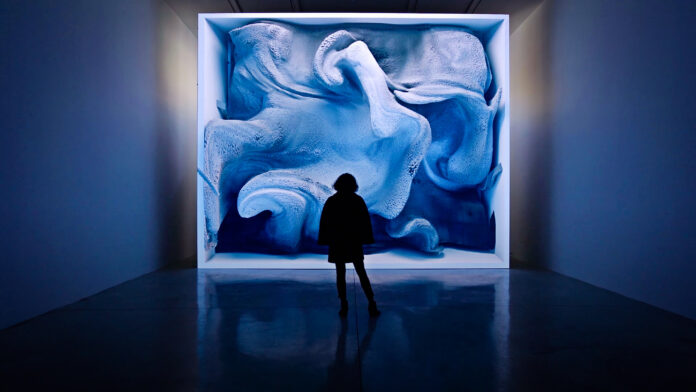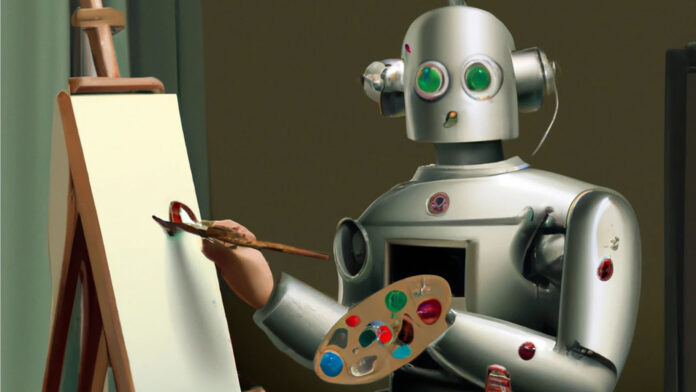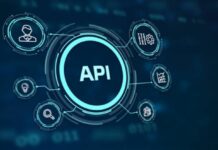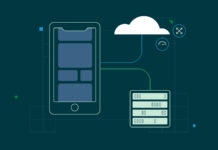
In the age of AI, art undergoes a transformation. Artificial intelligence has become a powerful tool for creating new forms and patterns in art. But what is AI, and how will it impact the future of art?
AI is a form of computer science that uses machine learning algorithms to solve problems and create content. It can be used in various ways for art, from generating new ideas to assisting with color selection or painting techniques. AI has also been used to create algorithmically generated music and video pieces.
Leveraging machine learning algorithms, artists can create unique works exploring complex concepts and telling stories through visualizations or soundscapes. This could challenge traditional conceptions about what constitutes “art” through new mediums and ways of expression.
However, ethical dilemmas associated with this technology must be addressed. For example, how do we ensure that human creativity isn’t replaced by machine-generated work? And should copyright laws apply to works created by machines?
AI Art: A Revolution In Visual Arts?

The emergence of AI art has sparked a new revolution in the world of visual arts. Using machine learning algorithms, artists can now create stunning works that were previously impossible to produce. Technology has enabled them to explore new creative avenues and produce works that blur the boundaries between man and machine.
One notable event that has brought AI art to the forefront is the AI Art Battle. This competition pits various AI algorithms against each other to see which can produce the most impressive artwork. It has showcased the immense potential of AI art and has sparked a global conversation about the role of technology in art.
While some traditionalists may argue that AI art lacks the human touch, many artists and enthusiasts believe that it opens up new possibilities and creates entirely new forms of art. It is rapidly growing in popularity, and it is clear that it has the potential to revolutionize the world of visual arts.
The Possibilities Of Augmented Creativity Through AI-Fueled Technologies

In the age of AI, we witness a new wave of innovation revolutionizing art and creativity. AI-fueled technologies offer endless possibilities for augmented creativity. The rise of generative art where humans create rules that computers use to generate new forms, ideas, and patterns, has enabled artists to explore their creative process in ways they couldn’t before. The future belongs to artists who will continue pushing boundaries in their own mediums. AI will not replace human creativity as it cannot replicate the unique way artists perceive things. Instead, we can look forward to witnessing the birth of a new artistic medium where AI is used collaboratively with humans to create unique works of art. Artificial intelligence offers opportunities to perceive and interact with our world in new ways.
How Does AI Make Art More Accessible?

One of the significant advantages of AI art is its potential to make art more accessible to a broader audience. Traditionally, accessing art has been limited by factors such as geographic location, socio-economic status, and physical ability. However, with the rise of AI art, people can now experience it in new and innovative ways.
These installations and exhibitions offer an interactive and immersive experience, allowing viewers to engage with art on a personal level. Additionally, it has made it possible for people to own unique pieces of art at an affordable price. AI algorithms can produce thousands of variations of a single artwork, providing buyers with a range of options to choose from.
Moreover, it has the potential to break down cultural and linguistic barriers. With the help of translation tools, art can be easily accessed and appreciated by people from different regions and cultures. This opens up new opportunities for artists to share their work with a global audience and for people to experience different forms of art from around the world.
A Brave New World-An Unsolved Mystery For Artists And Critics Alike
AI art has brought about a brave new world of artistic possibilities, but it has also left many artists and critics grappling with unsolved mysteries. One of the most significant challenges facing the art world is determining the role of the artist in the creation of AI-generated art.
While AI algorithms can generate stunning works of art, questions remain about who should be credited as the artist. Is it the programmer who designed the algorithm, the machine that executed it, or the person who provided the input? This ambiguity raises important questions about authorship, originality, and intellectual property in the digital age.
Another unsolved mystery is the extent to which AI art reflects the biases and limitations of the algorithms used to create it. These algorithms are trained on datasets that may contain biases, which can be reflected in the output. Additionally, it may be limited by the data it is trained on, leading to a lack of diversity in the output.
Furthermore, there is a concern about the impact of AI on the art market. As it becomes more popular, the demand for traditional art may decline, leading to a shift in the art market’s dynamics. It remains to be seen how this will affect artists, collectors, and the wider art ecosystem.
Conclusion
AI has the potential to revolutionize art and creativity in ways that have never been seen before, from AI-powered technologies to augmented creativity. AI is poised to open up a world of possibilities for artists and audiences alike. It can automate specific processes, generate unique works of art, and make them more accessible to individuals who lack traditional supplies. Although there are ethical considerations related to using AI in the creation process of artistic works, it is undeniable that this technology brings a new era of possibilities for the future of art. As we transition towards an increasingly digital world, it is necessary to consider how AI will mold our culture and society. To learn more about this thrilling topic, explore the available resources online around artificial intelligence art now.








